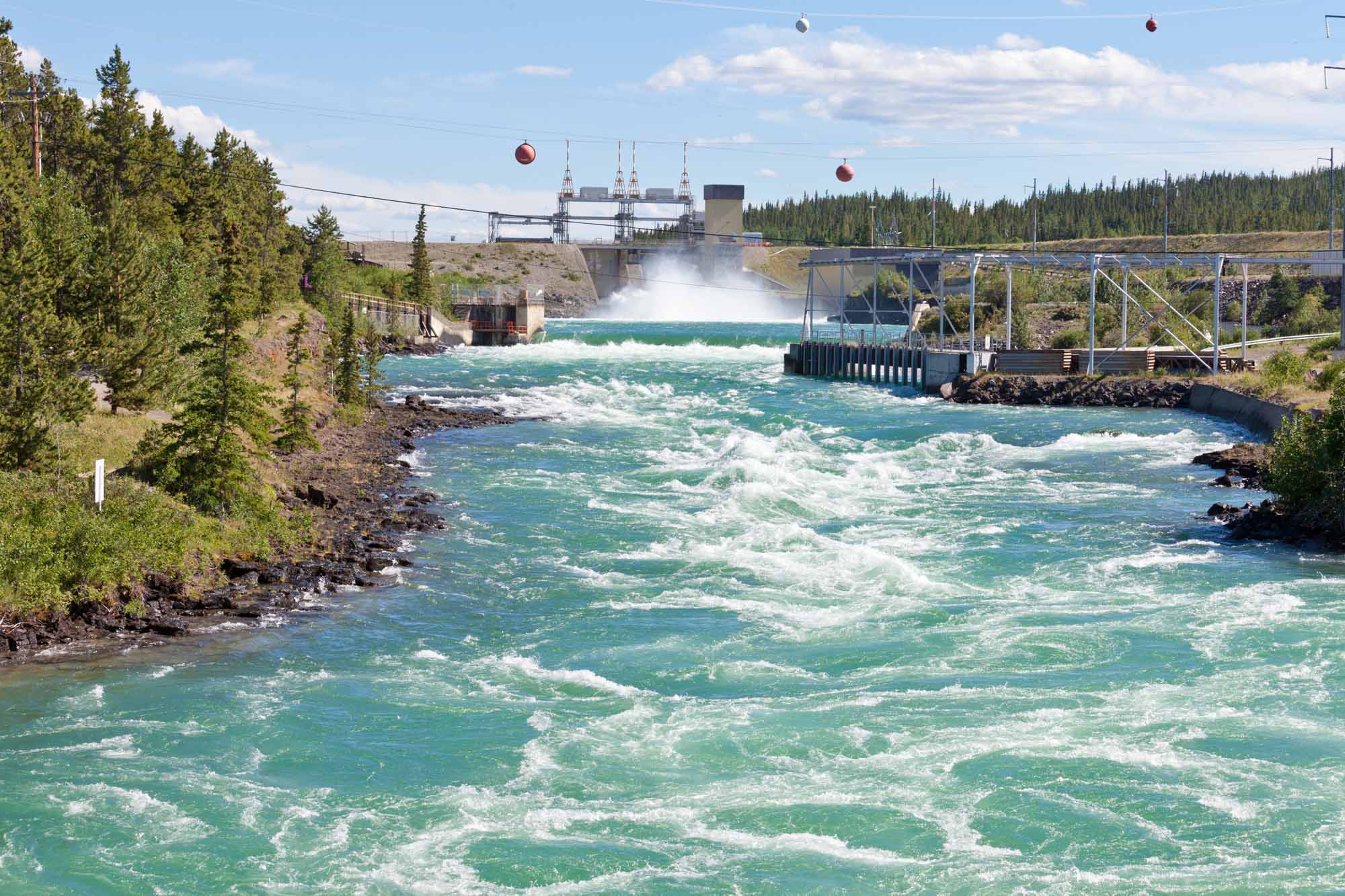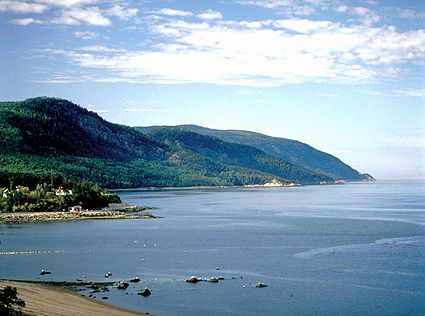Article
Resource Management
Resource management usually refers to the responsibility of governments to ensure that natural resources under their jurisdiction are used wisely or conserved.

Enter your search term
Signing up enhances your TCE experience with the ability to save items to your personal reading list, and access the interactive map.
Create AccountArticle
Resource management usually refers to the responsibility of governments to ensure that natural resources under their jurisdiction are used wisely or conserved.
"https://www.thecanadianencyclopedia.ca/images/tce_placeholder.jpg?v=e9dca980c9bdb3aa11e832e7ea94f5d9" // resources/views/front/categories/view.blade.phphttps://www.thecanadianencyclopedia.ca/images/tce_placeholder.jpg?v=e9dca980c9bdb3aa11e832e7ea94f5d9

Article
Natural-resource development has played a major role in Canada's economy and continues to be a focus of national concerns.
"https://d3d0lqu00lnqvz.cloudfront.net/media/media/b714baa3-b8d8-4657-a436-7f27a8b1c819.jpg" // resources/views/front/categories/view.blade.phphttps://d3d0lqu00lnqvz.cloudfront.net/media/media/b714baa3-b8d8-4657-a436-7f27a8b1c819.jpg

Article
Resource towns are small, isolated communities built around resource-based industries and transportation. They include mining towns, mill towns, railway towns and fishing villages. Resource development has long been a key factor in shaping the settlement and growth of communities. Some scholars have argued that all Canadian urban growth depends on the production of natural resources. (See also Staple Thesis.) Resource towns have been important agents in this production process. Because they depend on single industries, the economies of resource towns are often unstable.
"https://d3d0lqu00lnqvz.cloudfront.net/media/media/6883bca4-5691-4945-9140-c40b894294ea.jpg" // resources/views/front/categories/view.blade.phphttps://d3d0lqu00lnqvz.cloudfront.net/media/media/6883bca4-5691-4945-9140-c40b894294ea.jpg

Article
Since prehistoric times, the inhabitants of what is now Canada used vegetation and animals for food, clothing and shelter. They fashioned implements and ornaments from MINERALS and, after the arrival of Europeans, used furs for trading.
"https://www.thecanadianencyclopedia.ca/images/tce_placeholder.jpg?v=e9dca980c9bdb3aa11e832e7ea94f5d9" // resources/views/front/categories/view.blade.phphttps://www.thecanadianencyclopedia.ca/images/tce_placeholder.jpg?v=e9dca980c9bdb3aa11e832e7ea94f5d9

Article
Natural resources are aspects of the natural environment from which goods and services can be obtained and produced. They include air, sunlight, water, land, vegetation, animal life and geological resources. People can also value natural resources for their own sake or for their aesthetic qualities. Humans must manage natural resources to sustain the benefits they offer. Canada is among the most resource-rich countries in the world. Its large and varied natural resources are essential to its economies and cultures. But there are ongoing debates about how to use, share and manage natural resources. Click here for definitions of key terms used in this article. This is the full-length entry about natural resources in Canada. For a plain-language summary, please see Natural Resources in Canada (Plain-Language Summary).
"https://d3d0lqu00lnqvz.cloudfront.net/media/media/b714baa3-b8d8-4657-a436-7f27a8b1c819.jpg" // resources/views/front/categories/view.blade.phphttps://d3d0lqu00lnqvz.cloudfront.net/media/media/b714baa3-b8d8-4657-a436-7f27a8b1c819.jpg

Article
Rhododendron [Gk, "red tree"] is a large genus (700 species) of the heath family (Ericaceae) found in the Northern Hemisphere; 4 species are native to Canada. The genus contains both rhododendrons, usually evergreen, and azaleas, which are deciduous.
"https://www.thecanadianencyclopedia.ca/images/tce_placeholder.jpg?v=e9dca980c9bdb3aa11e832e7ea94f5d9" // resources/views/front/categories/view.blade.phphttps://www.thecanadianencyclopedia.ca/images/tce_placeholder.jpg?v=e9dca980c9bdb3aa11e832e7ea94f5d9

Article
Rhubarb (genus Rheum) is a common name for about 50 species of cool-season herbaceous perennial plants belonging to the buckwheat family and originating in central Asia.
"https://d3d0lqu00lnqvz.cloudfront.net/media/media/80784fac-4861-4271-b88e-ebc806b38b16.jpg" // resources/views/front/categories/view.blade.phphttps://d3d0lqu00lnqvz.cloudfront.net/media/media/80784fac-4861-4271-b88e-ebc806b38b16.jpg

Article
A river is a course of water, usually growing in volume between its source and its terminus in an ocean, a lake or another river.
"https://d3d0lqu00lnqvz.cloudfront.net/media/media/6206422f-7a2e-4576-abe6-c6c9e8cb75da.jpg" // resources/views/front/categories/view.blade.phphttps://d3d0lqu00lnqvz.cloudfront.net/media/media/6206422f-7a2e-4576-abe6-c6c9e8cb75da.jpg

Article
A rock slide is a type of landslide occurring when a mass of rock moves quickly downslope.
"https://d3d0lqu00lnqvz.cloudfront.net/media/media/698e80ed-51d4-40c7-a75f-36d14b5e66b3.jpg" // resources/views/front/categories/view.blade.phphttps://d3d0lqu00lnqvz.cloudfront.net/media/media/698e80ed-51d4-40c7-a75f-36d14b5e66b3.jpg

Article
The Rocky Mountain Trench is a long and deep valley extending approximately 1,500 km from the Bitterroot Valley in northwest Montana through British Columbia to the Liard Plain just south of the Yukon Territory. Its predominantly flat floor is 3–20 km wide and ranges in elevation between 600 m and 1,000 m above sea level. With walls made of sedimentary, volcanic and igneous rock, the Trench is sometimes referred to as the “Valley of a Thousand Peaks” because of the towering mountain ranges on either side: the Rocky Mountains to the east and the Columbia, Omineca and Cassiar mountains to the west. Humans have relied on the rich resources provided by this distinctive landscape from pre-colonial times to the present.
"https://d3d0lqu00lnqvz.cloudfront.net/media/media/061fe992-a3bf-45bc-906d-216d1bef45c7.jpg" // resources/views/front/categories/view.blade.phphttps://d3d0lqu00lnqvz.cloudfront.net/media/media/061fe992-a3bf-45bc-906d-216d1bef45c7.jpg

Article
Rodentia, largest and most common order of mammals, including 29 families, 418 genera and 1793 species. In Canada, 68 of the 163 species of terrestrial mammals are rodents.
"https://www.thecanadianencyclopedia.ca/images/tce_placeholder.jpg?v=e9dca980c9bdb3aa11e832e7ea94f5d9" // resources/views/front/categories/view.blade.phphttps://www.thecanadianencyclopedia.ca/images/tce_placeholder.jpg?v=e9dca980c9bdb3aa11e832e7ea94f5d9

Article
Rose is a common name for members of genus Rosa of the rose family (Rosaceae). This large family, comprising more than 100 genera and 2000-3000 species, includes plants as diverse as strawberries, almonds and pears.
"https://www.thecanadianencyclopedia.ca/images/tce_placeholder.jpg?v=e9dca980c9bdb3aa11e832e7ea94f5d9" // resources/views/front/categories/view.blade.phphttps://www.thecanadianencyclopedia.ca/images/tce_placeholder.jpg?v=e9dca980c9bdb3aa11e832e7ea94f5d9

Article
Rupert’s Land was a vast territory of northern wilderness. It represented a third of what is now Canada. From 1670 to 1870, it was the exclusive commercial domain of the Hudson’s Bay Company(HBC) and the primary trapping grounds of the fur trade. The territory was named after Prince Rupert, the HBC’s first governor. Three years after Confederation, the Government of Canada acquired Rupert’s Land from the HBC for CAD$1.5-million (£300,000). It is the largest real estate transaction (by land area) in the country’s history. The purchase of Rupert’s Land transformed Canada geographically. It changed from a modest country in the northeast of the continent into an expansive one that reached across North America. Rupert’s Land was eventually divided among Quebec, Ontario, Manitoba, Saskatchewan, Alberta and the Northwest Territories.
"https://d3d0lqu00lnqvz.cloudfront.net/media/media/2e0091d5-aa3e-4656-b4b6-2a1948aff9d7.jpg" // resources/views/front/categories/view.blade.phphttps://d3d0lqu00lnqvz.cloudfront.net/media/media/2e0091d5-aa3e-4656-b4b6-2a1948aff9d7.jpg

Article
Rutabaga (Brassica napus, Napobrassica Group), herbaceous biennial vegetable belonging to the Cruciferae family and grown as a root crop in all provinces.
"https://d3d0lqu00lnqvz.cloudfront.net/media/media/0636af78-864a-427a-ad15-fe22161cbdb6.jpg" // resources/views/front/categories/view.blade.phphttps://d3d0lqu00lnqvz.cloudfront.net/media/media/0636af78-864a-427a-ad15-fe22161cbdb6.jpg

Article
Rye is the common name for members of the genus Secale of the grass family (Poaceae, formerly Gramineae) and for the cereal grains produced by those grasses.
"https://d3d0lqu00lnqvz.cloudfront.net/media/media/83b4aacd-d567-425d-9f9d-419c6a8b8ce8.jpg" // resources/views/front/categories/view.blade.phphttps://d3d0lqu00lnqvz.cloudfront.net/media/media/83b4aacd-d567-425d-9f9d-419c6a8b8ce8.jpg
